The “Early Innings” of the Precious Metals Cycle - Monthly Wrap Up
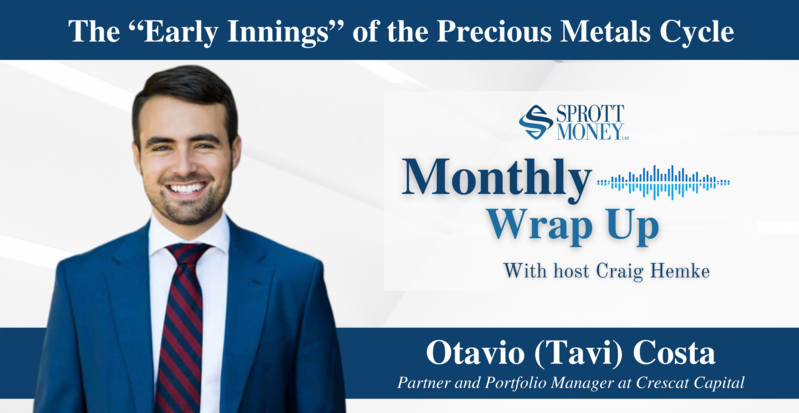
Did you know you can get the Sprott Money Monthly Wrap Ups, Ask The Expert,
special promotions and insightful blog posts sent right to your inbox?
Sign up to the Sprott Money Newsletter here.
As we close out the month of October, it’s been a tough year so far for precious metals investors. But are trends starting to change? Host Craig Hemke sits down with Tavi Costa of Crescat Capital to break down all the gold and silver news you need to read the positive signs coming out of the mining industry.
In this edition of The Monthly Wrap-Up, you’ll hear:
- Could silver pick up a bid as an industrial metal the way copper has?
- What’s holding gold back right now
- Plus: Will the FOMC meeting be a “Buy the News” event?
“I do think some things are starting to change here. Finally, we’ve started to see the sentiment really get to an extreme on the bearish side. Some folks saying that the gold trade is dead, the precious metals trade is being replaced by other assets, when actually what we’re seeing is quite normal. Gold, as it reaches new highs—and it did in August of 2020, and it did as well in January of 2008, and even in 1978 as well—all those times when we hit those levels, we usually see some weakness.”
To hear Tavi’s full thoughts on the month’s gold and silver news, listen here:
Man: You're listening to Sprott Money's Monthly Wrap Up with Craig Hemke.
Craig: Well, welcome back to the Sprott Money News Monthly Wrap Up, for the month of October 2021. Remember, this is our new format. It kind of replaces the Weekly Wrap Up. And it's here that we'll talk to some movers and shakers in the precious metals industry, get their thoughts on the month that was, and look forward to the months to come. I'm your host, Craig Hemke. Joining us this month is Tavi Costa. Tavi, many of you will recognize from his work within the precious metals industry. He's a very popular public speaker, he has a very good follow on Twitter, but he's also a portfolio manager and partner at Crescat Capital in Denver. So he is all about the precious metals in the mining shares. He's a great guest to have this month for the Monthly Wrap Up. Tavi, thank you so much for your time.
Tavi: Well, thanks for the introduction, Craig, and happy to be here. Looking forward to this.
Craig: Great to visit with you. And again, just ask everybody a favor. If you enjoy this content, please be sure to throw a bone to Sprott Money. It could be as simple as giving us a like or a subscribe on whatever channel you listen to these podcasts. That helps just get a wider distribution of our message. But also, anytime you're in the market for precious metals or a place to store them, understand that Sprott Money is always out there, looking for new deals, bringing in new inventory. You always want to check sprottmoney.com whenever you're in the market. You can always go to the website or just pick up the phone and give them a call, 888-861-0775. Always a good time to stack regardless of whether the price is going up or down. And Tavi, let's start there. It has been such a challenging year because so many macro factors have pointed to higher precious metals prices. Instead, we got lower precious metals prices. But here in the month of October, as the fourth quarter begins, starting to look, maybe in the charts, maybe just in the general field of sentiment, kind of starting to feel like the trend is changing. What do you sense on your end?
Tavi: I do think some things are starting to change here. Finally, we're starting to see the sentiment really get to an extreme on the bear side. Some folks saying that the gold trade is dead, the precious metals trade is being replaced by other assets, when actually what we're seeing is quite normal. Gold, as it reaches new highs, and it did in August of 2020, and it did as well in January of 2008, and even in 1978 as well, though all those times when we hit those levels, we usually see some weakness. 1978 was about 15% decline. In 2008, it was actually closer to 30%. And this time around, we're seeing kind of a longer pause, but it's about 15%. And so miners have followed to the downside, gold to silver ratio is to a 74, which is quite attractive for silver. And so all the signs are here, and, you know, if we go over to the fundamental story right now in the mining space, it really tells you that you are at the very early innings of the precious metal cycle.
What a time to be accumulating assets, in my view, at a moment when everyone is avoiding this industry. So I'm very excited. I think things are starting to shape up pretty well for this whole industry. Miners beginning to outperform gold, and you're seeing silver mining miners outperforming silver itself. You're seeing junior miners starting to do better than senior miners. So a lot of positive signs for this industry. And I'm very excited about it.
Craig: Let me throw this little log on the fire too, Tavi. I would imagine you watch the base metals, the industrial metals, the whole entire commodity complex, you know, copper has pulled back in the last four or five days, but it was moving back toward its all-time highs, and you see down the list, zinc, aluminum, tin, steel. I mean, again, when you get into the broader kind of stagflationary idea with all this inflation that we've seen earlier in the year, and lumber and cold rolled steel and iron ore and everything else. Silver bottomed out, broke down through 22 on a one-day kind of reversal. Seemed like some stops got run, and now it's back up above 24. Are you sensing... I mean, could silver kind of pick up a bit as an industrial metal the way copper has and some of these others?
Tavi: We would hope so. I think silver is one of the very few opportunities out there that kind of fit into the monetary metal aspect, but also the Green Revolution that we're seeing in regards to the electrification worldwide. And it's coming in a big way from the fiscal policy and the fiscal agenda that is very extensive, and trying to pursue those policies. And so I think silver is...you know, I keep saying this, and I really believe in it, it is the cheapest metal on Earth, in my view, it has the most asymmetry you could possibly find, it's cheap relative to money supply, it's cheap relative to gold at a 74 ratio. If you take out what happened during the pandemic issues, at a 74 gold to silver ratio, all those times that we saw levels like this, were not levels that miners were at the peak, were not levels that precious metals are at the peak, we're at levels where precious metals were about to move higher, and silver was about to lead the way. And so it's an interesting time to be allocating capital towards this.
And another reminder, you're talking about the supply side, it's not like we're seeing CapEx following the metal prices in the last years or so. Gold and silver have had a good run in the last since 2018 or so. And we didn't see the follow-up on the CapEx side, because I would say the corporate behavior has been very reluctant to spend capital, and that has been translating into supply issues that have not been priced in the markets. And the pandemic problems have only accelerated these issues across the entire commodity space. I even think agricultural commodities are probably, you know, onto or on a verge of a very big move to the upside, as I think the next domino to fall is probably a food crisis. But it's all kind of, you know, falling into this and feeding into this inflation thesis, and what a better asset to own than silver in an inflationary environment. So, yeah, I really like silver here.
Craig: Yeah, no, I hear you. You know, Tavi, let me run the next idea past you that I've been bouncing around now, here in 2021. It seems...you know, we always talk about the markets being forward-looking, right? Always anticipating 6,12 months out. But the main driver of the markets, all markets seem to stay is the Fed. And the Fed, almost by definition, is kind of more reactive than they are proactive. And so there's kind of this, I don't know, crosscurrent there, dichotomy. As of late, and, you know, through this entire year, really, seems as if the "markets," you know, I use that term in quotation marks, has been looking at things and buying into this whole, in a transitory narrative. Oh, sure, real rates are negative 4%. But it's transitory, and so, therefore, they're going to go back to zero next year. So why buy gold? I'm sensing that's beginning to shift, though. What do you think of that? Do you see that? Is that what's kind of holding gold back, is this whole transitory thing?
Tavi: I think it has a little bit more to do what we may see in regards to Treasury bonds. And a lot of people have a different view on this. And I'm looking at mostly on the supply side and the demand side of treasuries, rather than so much on the balance of the debt, which I'm very aware of, especially on the government side. It's quite incredible that we saw a very large issuance of T bills at the beginning of the pandemic, which also happened during the beginning of the global financial crisis, where 90% of what was issued or how the debt composition was created during those moments of crisis, were actually through short-term maturity bonds. And now we're seeing a change of the composition of the debt on the maturity side of outstanding treasuries, which is an increasing pattern. We're seeing a flood of issuances of notes and bonds. Just in the last three months, we saw somewhere close to $650 billion of issuances of notes and bonds.
So you're telling me that we're going to see this issuance at the same time we're going to see the Federal Reserve, which bought about 40% of this 650 billion issues of notes and bonds, will completely stop what they're doing in eight months from now through tapering. And the inflation story is not transitory. How in the world will 10-year yields stay where they are? Who's going to be buying this? I'm really questioning this because, at the same time, the Euro-Dollar curve is telling us that the short-term rates should be at 1.3%. If we pursue that as a plan, guess what, we would have an inverted yield curve, pretty much, because it wouldn't be possible. In fact, if you look at 5 versus 30, on the yield curve spreads, you can see that it's already flattening to levels that we only seen in April of 2020. So it is interesting what's going on.
We all know the Federal Reserve is strapped, as strapped as it could potentially possibly be. And so what are they going to do? It might be the way that they might have to allow 10-year yields and 30-year yields to rise a little bit. So if they have to fight inflation, they will have to do something in short-term rates. But, by the way, what are they going to do here? They're going to shock the world and raise rates by 2%? It still is the most regressive financial environment we've had in history, probably, given where, you know, inflation is. We know it's not 5.4% year over year. We know it's more like double digits. And so, if that's the case, and you look at the interest rate policy, we are way far ahead here in regards to how aggressive these policies are. And so something is not matching here. And I think the inflation story will continue to build up because there is not enough tightening happening at all right now.
Craig: So Tavi, as we record this here, in late October, there's November FOMC, meetings coming up next week, nearly November, and the middle will conclude on Wednesday. And then you'll get the Fed lines and the press conference. And it's all pretty much baked in the cake that they're going to announce a taper of the QE schedule. And I'm sure everybody will be looking at the dot plot and all this other kind of stuff. But now the discussion seems to be shifting, or is the Fed already making a policy here, you know, as the markets look forward and say, you know, "Wait a second, you should have been hiking rates six months ago, because by six months from now, we might be heading into deeper stagflation, actual recession, given the way the data is coming in." So all that, and, I mean, what do you expect next week? Do you expect the Fed to announce what everybody expects? And if that all plays out that way, does it become kind of almost like a buy-the-news event for the precious metals?
Tavi: Yes, I think they're gonna have to start tapering. And I think we will see some other implications out of this, the 10-year yield, the third-year yield, will probably start moving to the upside. And for folks that are worried about that impacting gold, I suggested a look at what happened in the 1970s in the decade of that, when 10-year yields were rising along with gold, very much in line with the gold price. And so the deceleration of growth is real, and it's probably coming from Asia, it's probably coming from China specifically, and now South Korea, and then Australia. And so there's quite a lot of issues happening, especially from commodity, I would say commodity takers, commodity importers, and mostly of those who would be China.
And so the deceleration of growth, is the first-time policymakers in developed economies are having to deal with, "Should we add liquidity to a decelerating economy? Or should we stop and put the brakes on at a time when inflation is starting to be..." you know, perhaps the narrative is changing, and the psychological move in consumers from this inflationary narrative becoming more prevalent is starting to really build up here. So should they start really tapering and raising rates to levels that they can actually sustain? Because at the levels of debt, they can't really do much. So it's creating a place where the Fed is limited on what they can do. And inflation will continue to run higher, because copper doesn't care about 10-year yields being at 2.5%, 3%. Oil doesn't care about that either. Agricultural commodities couldn't care less about that. And so these inflationary forces will continue to creep up, in my view, and creating this stagflationary environment, but I do think you're going to go ahead with taper.
Craig: Yeah, it certainly seems, like I said, kind of baked in the cake. Everybody's anticipating that. I mean, they made it pretty clear, with all the different speeches and appearances that that's coming. As soon as next week, that's for sure. Tavi, you're being very generous with your time, but we always let all the customers of Sprott Money know that we're going to have these...whoever the guest is going to be for each of these conversations. So we always get some questions that come from the internet and from Sprott Money customers. I've got just a handful of them that I want to run past you and just get your thoughts before we wrap up. One of them came in, said, "I often hear you mention...." It must be one of your Twitter fans, I would suppose, Tavi, "...that the mining shares of mining companies generate free cash flow now for the first time in quite a while." What does that mean, generating free cash flow?
Tavi: Well, there's two parts of this, number one is the cash flow part of the equation is growing at levels we haven't seen in the past. Number two, the CapEx has been very suppressed over time relative to where metal prices are. And so we're seeing in, I would say, the median free cash flow yield relative to enterprise value now for the top 50 miners is approaching close to 10%, depending on the company. So some of those businesses are trading at, you know, three to five annual free cash flow. If you think about that, those are multiples of the market telling you that those businesses are going to be out of business. And so I just don't think that that's going to be the case here.
The fundamental story for miners is it tells you very well what's going on and where the stages of the precious metal cycle here. You're seeing, number one, the leverage situation improving significantly. With the free cash flow generation, they're actually using it to pay down debt, largest repayments of that in history. So, net debt issuance has been declining, levels we haven't seen before. Net equity issuances has also been declining in a large way. So there hasn't been much dilution, and the M&A cycle, where is the M&A cycle? We haven't seen any of that just yet. And so I am thinking at this, as, you know, those are very, very clear signs of early stages of gold and silver in the mining cycle that I think has a long way to go. And if there was ever a time to be taking risk, in my view, I think the time is now.
So we've been allocating capital in this industry in a very big way. And we'll continue to do so until it doesn't make sense in the macro world. But the macro narrative has never been so strong for precious metals. And so I think it makes a lot of sense to take advantage of this volatility in price that I think is unwarranted.
Craig: Tavi, you kind of briefly touched upon the second question that had come in, because it deals with M&A. You know, you've got depleting resources all the time, right? When you're pulling stuff out of the ground, and an industry that didn't put a lot of money towards new resources on the middle part of the last decade. And so a lot of folks by exploration companies and junior miners expecting, you know, that there'll be a bid for them someday from a large, you know, consolidation or a large company looking to add to their resources. We've been waiting for that, and it hasn't seemed...you know, it's like, well, maybe next year M&A will get going. Do you have any thoughts about when M&A might pick up? What circumstances might drive that?
Tavi: I think that it's important to... yes, the balance sheets of those miners are improving significantly, but they're not swimming in cash. And by that I mean their net cash balances are improving significantly. And if we continue to see free cash flow growth at the levels that we're seeing currently, we'll certainly see a build-up of cash to levels we haven't seen before. So companies are paying down debt, they're improving the balance sheets, but they're not swimming in cash. So there has to be some sort of currency improvement. And by that, I mean the improvement of the share price of those businesses to allow them to issue equity and start using it to buy other projects and companies and consolidating the whole industry.
But we haven't seen any M&A yet. Those companies have been very gun shy in acquiring new projects at a time when there has been a depletion of their reserves to produce more and more. And that depletion of reserves is creating a supply cliff problem in the following years. And so it's going to have to be a time when there is some sort of floodgate of liquidity from the mining companies, the top miners to start acquiring high-quality exploration projects. And so that is why we are a strategy, because, I think, as an investor, you must be thinking about your investment thesis as having a lot of optionality. And it's nice to have an optionality side of the industry, with the top miners improving their fundamentals, just then start acquiring those projects at some point. There's also the flood of liquidity, perhaps, coming from the macro world as large capital allocators, you start to look at precious metals, again, as an alternative of investment, which hasn't been the case for a real long time.
And so there's quite a lot of things happening, and the massive capital allocation has been focused on tech companies and treasuries and so forth may shift towards natural resources in a very significant way. And so that is why the optionality for gold and silver and miners and explorers has never been so high and so interesting to the risk-reward for any investor today. So we like those as an investment thesis.
Craig: And one last question, this person obviously understands your background, as a native Brazilian, I should just say. This person wants to know, "What do you think of the short-term, near-term future of the Brazilian real, and how might changes to that currency impact the Brazilian mining shares?
Tavi: I do not own any Brazilian real, and I do own some Brazilian miners. I think that if there was ever a time to own Brazil and Brazilian assets, that time would be somewhat of today. I want to be mindful of a chart that...it really stays in my mind all the time, which is, if you think about financial conditions tightening in the U.S., at least a bit, let's not say significantly, but at least a bit, from here, those will have an impact in emerging markets. You know, there's no way around that. That happens every time. However, there is a separation of emerging markets that has to be done when you analyze this. You have, you know, China and India are two places that are commodity takers, you know, they're commodity importers, and you have the exporters, such as Brazil.
You know, Brazil can actually benefit from a commodity boom here. Most of the IBOVESPA, or the Brazilian shares, Brazilian index, stock market index is related to commodity place. And so you would expect that a rise in iron ore prices, a rise in commodities, in general, oil being one of them, as well, would actually have a very large impact in Brazilian shares. So, again, I don't have a high conviction on this. But if it was ever a time to own Brazil assets, or Brazilian assets, I think this time is now. We like to own mining companies in Brazil. We have a few positions there, one of them being a very consolidator. It's still a small, I would say private company. It's not a small company, actually. It's becoming bigger. It's called Pilar Gold, that we like quite a lot. It's still a private company. It's becoming a consolidator in the space.
There's quite a lot of other good businesses in Brazil, and Jaguar Mining is another one. We don't own that. But, you know, I think there are options as well in Brazil to take advantage of. The political environment will be what's going to lead the way here in the next year, because we're going to go through another election, and we have Lula going against Bolsonaro. So it's as polarized as it could potentially be. And so I think that's going to lead to some changes in the markets. And if we see Lula taking power, you know, game over for equity markets in Brazil. I mean, it's going to be very difficult to see any improvements in equity markets there in the economy. So pay attention to that. I think that's going to be one of your...what's going to tell you what to do in Brazil.
Craig: Tavi, before we go, tell us a little bit about your day job as a portfolio manager and partner at Crescat Capital.
Tavi: My day job is to look for opportunities that we think are inefficiencies in the markets. And one of them, I think, is in the commodities, but mostly an exploration space of the market. And so we build portfolios that are according to our macro views, and our view is that commodities relative to equities will continue to...that ratio will continue to move up to the upside. And so commodities will continue to outperform equities. And our focus has been, how can we look for asymmetry in both sides of that trade? Precious metals being so oversold relative to other commodities is one side of that trade. And then you have the tech companies and high-duration assets that may struggle with the inflationary environment that we're entering. So that's basically in a nutshell what Crescat is trying to do and funding a lot of gold and silver exploration names across the entire industry. So we've been busy with Quinton Hennigh and Kevin Smith, really trying to build a company that will hopefully invest in the next world-class gold and silver and some base metal discoveries of the next year.
Craig: And if people want to tap into that expertise and ask Crescat to manage some cash for you, they just go to crescat.net. Correct?
Tavi: That's right. That's right, Craig.
Craig: Crescat.net. And, of course, if you're looking for precious metals, your choice is sprottmoney.com. Sprott Money. That's where you want to find all your precious metals products, physical bullion, storage of said physical bullion, and always a list of great deals with Sprott Money. And again, please give us a like, a subscribe, if you will, on whichever channel you've been listening, and, of course, always keep the number in mind, 88-861-0775. Tavi Costa of Crescat Capital, it's been great visiting with you. Really, really appreciate all your time, because it's been a fascinating discussion and very helpful.
Tavi: I always enjoy talking to you. You're a great interviewer, Craig, and thanks for having me here.
Craig: And from all of us at Sprott Money News and Sprottmoney.com, thanks for listening. We'll have another Monthly Wrap Up for you next month.
Don’t miss a golden opportunity.
Now that you’ve gained a deeper understanding about gold, it’s time to browse our selection of gold bars, coins, or exclusive Sprott Gold wafers.
About Sprott Money
Specializing in the sale of bullion, bullion storage and precious metals registered investments, there’s a reason Sprott Money is called “The Most Trusted Name in Precious Metals”.
Since 2008, our customers have trusted us to provide guidance, education, and superior customer service as we help build their holdings in precious metals—no matter the size of the portfolio. Chairman, Eric Sprott, and President, Larisa Sprott, are proud to head up one of the most well-known and reputable precious metal firms in North America. Learn more about Sprott Money.
Learn More
You Might Also Like:




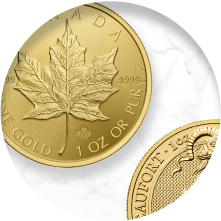

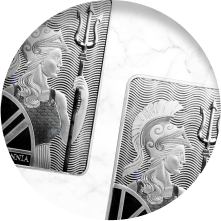
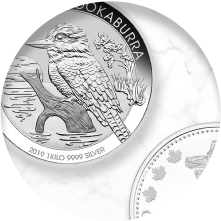
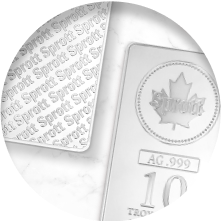

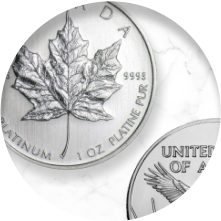

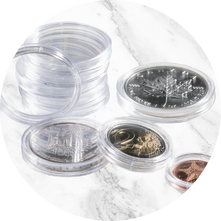
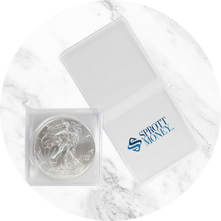



Looks like there are no comments yet.